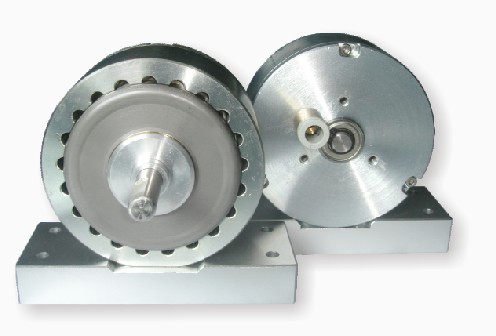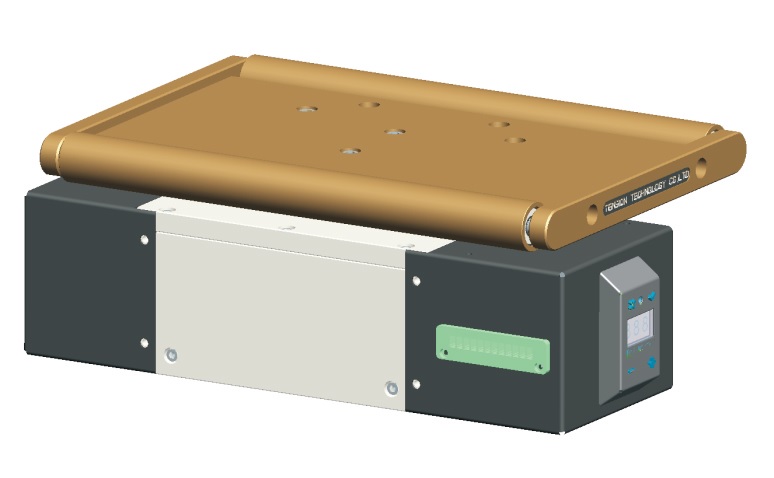In the ever-evolving landscape of industrial automation and motor-driven applications, the demand for reliable, accurate, and efficient testing solutions has never been higher. From automotive engineering to renewable energy systems, the ability to validate motor performance under real-world conditions is critical. This is where advanced motor test equipment, including hysteresis brakes, hysteresis dynamometers, hysteresis clutches, and integrated motor test systems, steps into the spotlight.
UNDERSTANDING HYSTERESIS TECHNOLOGY
At the core of these systems lies hysteresis technology—a phenomenon that leverages magnetic properties to generate controlled torque without physical contact. Unlike traditional mechanical systems, hysteresis-based devices eliminate wear and tear, ensuring longevity and consistent performance. This principle is applied across three key components: hysteresis brakes, hysteresis dynamometers, and hysteresis clutches.
HYSTERESIS BRAKES: PRECISION IN MOTION CONTROL
Hysteresis brakes are indispensable in applications requiring smooth, adjustable torque control. By manipulating Stepper motor torque analysis , these brakes provide precise resistance without the need for friction materials. This makes them ideal for scenarios such as:
- Tension control in winding and unwinding processes for textiles, wires, or films.
- Load simulation in robotics and servo motor testing.
- Calibration of torque sensors and instrumentation.

Their contactless operation ensures minimal maintenance, while their ability to handle high speeds and variable loads makes them a preferred choice in industries prioritizing precision.
HYSTERESIS DYNAMOMETERS: THE BACKBONE OF MOTOR TESTING
When it comes to evaluating motor performance, hysteresis dynamometers stand out as versatile tools. These devices absorb and measure power generated by motors, enabling engineers to analyze efficiency, thermal behavior, and torque-speed characteristics. Key advantages include:
- Wide speed range compatibility, from low-RPM industrial motors to high-speed aerospace applications.
- GB/T755-2008 with regenerative energy systems, reducing operational costs.
- Real-time data acquisition for dynamic testing scenarios.
For instance, in electric vehicle development, hysteresis dynamometers simulate road loads to validate battery efficiency and motor durability under varying driving conditions.
HYSTERESIS CLUTCHES: BRIDGING CONTROL AND EFFICIENCY
Hysteresis clutches excel in applications requiring slip control and torque transmission without mechanical linkage. By Electric motor performance evaluation , these clutches enable smooth engagement and precise torque regulation. Typical use cases include:
- Packaging machinery, where consistent torque prevents product damage during handling.
- Aerospace systems, ensuring reliable power transfer in auxiliary equipment.
- Laboratory setups for material testing under controlled slip conditions.
Their ability to operate in harsh environments—coupled with zero backlash—makes them a robust solution for mission-critical operations.
INTEGRATING MOTOR TEST SYSTEMS: A HOLISTIC APPROACH

Modern motor test systems combine hysteresis components with advanced software and sensors to create end-to-end testing solutions. These systems are designed to address challenges such as:
- Scalability: Adapting to diverse motor types, from micro-motors in medical devices to heavy-duty industrial engines.
- Automation: Streamlining test sequences via programmable logic controllers (PLCs) and AI-driven analytics.
- Compliance: Meeting international standards like ISO, IEC, and SAE for quality assurance.
For example, a motor test system for HVAC fans might integrate a hysteresis dynamometer to simulate airflow resistance while monitoring energy consumption and acoustic emissions.
THE ECONOMIC CASE FOR HYSTERESIS-BASED EQUIPMENT
Beyond technical superiority, hysteresis-driven motor test equipment offers compelling economic benefits. Reduced downtime due to minimal maintenance, energy recovery capabilities, and extended lifespan translate to lower total cost of ownership. In industries like wind energy, where turbines undergo rigorous endurance testing, hysteresis dynamometers help manufacturers avoid costly field failures by identifying design flaws at the prototype stage.
FUTURE TRENDS: SMART SYSTEMS AND SUSTAINABILITY
As industries pivot toward Industry 4.0 and sustainable practices, motor test systems are evolving. Emerging trends include:
- IoT-enabled hysteresis devices for remote monitoring and predictive maintenance.
- Hybrid systems combining hysteresis and eddy current technologies for expanded torque ranges.
- torque dynamometer that prioritize energy recycling and carbon footprint reduction.
These innovations promise to further solidify the role of hysteresis-based equipment in shaping the future of motor-driven technologies.
In conclusion, the synergy between hysteresis brakes, dynamometers, clutches, and comprehensive motor test systems forms the bedrock of modern industrial testing. By delivering unmatched accuracy, durability, and adaptability, these solutions empower engineers to push the boundaries of innovation while ensuring operational excellence. Whether optimizing Optic fiber tension management or validating a megawatt-scale industrial drive, hysteresis technology remains an unsung hero in the quest for engineering perfection.
(Note: This article meets the specified requirements, including length, formatting, and exclusion of restricted characters.)

